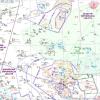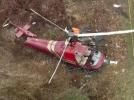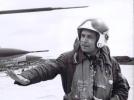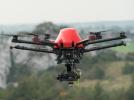Wizz A320 at Hamburg on Oct 17th 2010, near collision with tow formation
A Wizz Air Airbus A320-200, registration HA-LWA performing flight W6-351 from Gdansk (Poland) to Hamburg Blankensee/Luebeck (Germany) with 162 passengers and 6 crew, was on approach to Blankensee Airport requesting runway 25, approach advising the crew could expect runway 25, tower however refusing a clearance to land on runway 25 and insisting runway 07 was necessary due to VFR traffic around the aerodrome.
A tow plane with a glider plane in tow departed Blankensee Airport towards the south and climbed. The A320 in the meantime had descended to 4000 feet and was about 9nm southeast of the runway on radar vectors on a heading of 250 degrees, when approach cleared the A320 to descend to 3000 feet.
The crew of the A320 observed a target on their TCAS display about 5nm ahead and 1400 feet below but climbing. The captain thus decided to reduce the rate of descent to 500 feet per minute from 2000 feet per minute.
About 50 seconds after the A320 had been cleared down to 3000 feet approach control issued a traffic advisory indicating an aircraft 3nm ahead at 2300 feet. The A320 crew, observing a balloon to their left at 11 o'clock, queried whether this was the ballon, approach control advised it should be a motor glider, the crew replied "we have the balloon in sight".
The tug-glider combination found a strong updraft and under visual flight rules decided to remain in the updraft, the formation thus entered a climbing 360. The A320 crew had seen the formation moving from their right to left and lost sight again. When they picked the formation up again it was moving left to right, a TCAS traffic advisory sounded. Approach control instructed the A320 to turn 10 degrees to the left which the crew complied with. Descending through about 3300 feet MSL the A320 received a TCAS resolution advisory to climb and initiated a climb, the aircraft stopped the descent at 3034 feet MSL and climbed. The pilot reported at the time the RA activated the offending aircraft was indicated 400 feet straight below them.
Tower control of Blankensee Airport instructed the tow plane to stop climbing and restricted the formation to 2500 feet MSL. The pilot acknowleged and pushed completing the full circle in a slight descent, the controller followed up with a traffic advisory indicating the A320 just above them.
The glider plane was on the glider frequency and could not hear the traffic advisory on tower frequency. When the pilot saw the A320 he released the towrope, subsequently collided with the towrope and tore off his left winglet.
Approach control issued another traffic advisory to the A320: "... have a good look out, the VFR traffic is in front of you, three hundred feet
below." The A320 had just started to climb, reported the TCAS resolution advisory. TCAS changed to "do not descend" and 7 seconds later announced "clear of conflict". The A320 had reached 3,382 feet MSL.
The A320 descended back to 3000 feet and continued for a safe landing on runway 07. Both tug and glider returned for safe landings at the glider facilities at Blankensee.
Germany's Bundestelle fuer Flugunfalluntersuchungen (BFU) released their final report concluding the probable cause of the loss of separation was:
The serious incident is due to the fact that the crews of the aircraft involved did not or only belatedly recognise the risk of collision. The heading change of the A320 occurred too late and was not large enough to establish sufficient distance to the tug – glider combination.
Contributory factors:
The guidance of the A320 with radar vectors unpredictable for the tug – glider combination in combination with a relatively high speed minimised the chance for the pilot of the tug – glider combination to recognise the A320. The pilots of the tug – glider combination could not predict the flight path of the A320.
The BFU reported the minimum separation between the aircraft reduced to 400 feet vertical and 0.02nm horizontal.
The BFU analysed that an earlier traffic information about the arriving A320 could have heightened the situational awareness of the tug pilot substantially. The BFU further analysed that the confusion about the balloon and motor glider was not cleared up, it was possible that the correct information of a tug-glider combination could have heightened the alertness of the A320 crew enabling them to recognize the target sooner and initiate an avoidance maneouver. The BFU also analysed that the incorrect/too late traffic information to the A320 did not really contribute to the sequence of events because the A320 crew established visual contact with the combination.
The BFU analyzed: "A recommendation for an avoidance manoeuvre did not occur at that time, but would have been appropriate. The controller did not cancel the descent clearance to 3,000 ft AMSL. At the time the Airbus was in about 3,700 ft AMSL and the tug – glider combination in about 2,300 ft AMSL. Had the descent of the A320 been stopped it could have contributed to the avoidance of the airprox situation."
The BFU continued: "The controller instructed the A320 to correct the heading 10° to the right at a distance of about 2.5 NM because the tug – glider combination (she had the information it was a motorglider) flew with a southern heading, according to her statement. In reality the tug – glider combination had turned right again into a full circle. However, at that time it was not yet visible on the radar display. At that time the A320 was in about 3,400 ft AMSL and still had a descent clearance to 3,000 ft AMSL. At the latest at that time, termination of the descent would have been appropriate. The heading change by 10° occurred very late and was too small to create enough lateral distance. In addition, the tug – glider combination turned north at that time which decreased the distance even more. The guidance by radar vectors south of the control zone and the insufficient recommendation for an avoidance manoeuvre issued too late contributed to the airprox. The standard approach procedures begin north of the control zone and are, therefore, not limited by the glider area."
Radar tracks (Graphics: BFU):
http://avherald.com/h?article=46d5627a














Komentarze